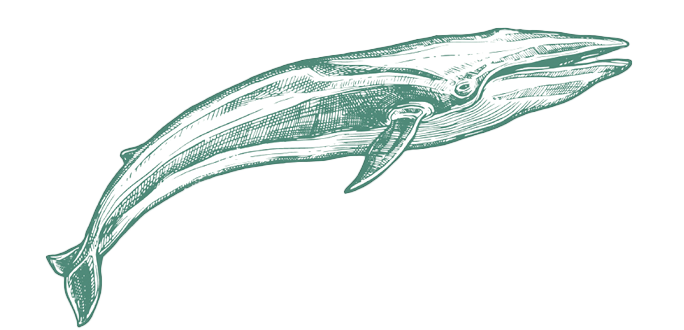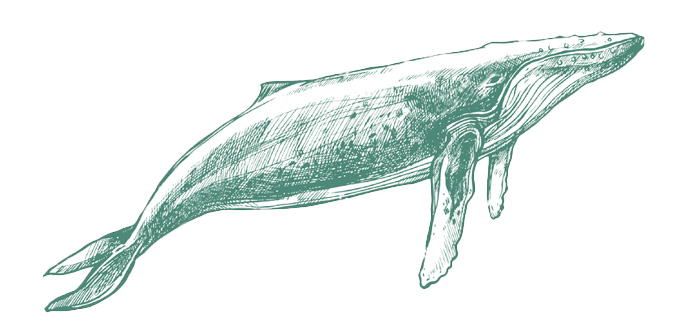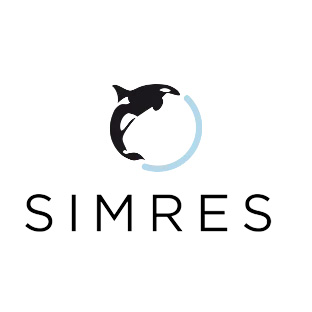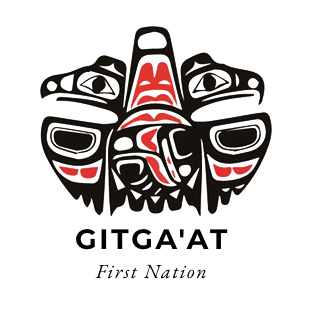Whale Vocalizations
Whales use sounds for communication and navigation in their underwater habitat. Different species make different sounds for various reasons, such as courtship or long-distance communication. For example, toothed whales use echolocation to locate prey and navigate.
Human activity on the water creates noise that can disrupt this whale communication and navigation, therefore the studying and understanding of whale vocalizations becomes crucial to whale conservation.
select a species
select a species

Orca
Orcas use sound for communication and navigation. Orcas make three primary types of vocalizations: clicks, whistles, and discrete calls. Orcas rely on sound production and reception to
navigate, communicate, and hunt in dark or murky waters, where sight is of little use.

Fin Whales
Fin whales are the second largest baleen whale and are found worldwide in all major oceans, including the continental shelf of Pacific Canada. World-wide commercial whaling that occurred in the 20th century reduced fin whale populations by more than 50%. The Canadian Pacific population is now showing evidence of recovery.
The management of recovering fin whale populations has been informed in part by passive acoustic monitoring with hydrophone technology, which has proven to be an effective, non-invasive tool for studying fin whale populations off the coast of BC.
The most common vocalization produced by fin whales is a down-swept 20 Hz call that is 1s in duration and is universally used by populations in all ocean basins. Patterned 20 Hz call sequences or “song” can last up to several hours and are composed of predictable frequency components and arranged in stable time increments. There is evidence that subpopulations use their own distinct variations of song, which has been suggested as an indication for population association as well as inter-population connectivity. A second call type produced in the 40 Hz range is thought to be associated with feeding patterns, but further research is required. Due to the low frequency of fin whale call types, these calls can travel hundreds of kilometres underwater.
Fin Whale
Fin Whale

Humpback Whales
Humpback whale communication is diverse, continually evolving, and has captivated and inspired people world-wide for generations. Some believe the melancholy notes and heartfelt quality of humpback whale song turned the page for many whale species from decades of hunting to valued measures of protection.
For decades, researchers have been following this complex underwater whale song that is constantly shifting and reshaping as each season passes. Only male humpback whales sing, the song is learned socially and is culturally transmitted within a population. During the breeding season this song display can last many hours. Along the coast of BC, it has been proposed that humpback whales practice and prepare a song for the coming year. During the song, humpback whales produce an intricate series of sounds ranging from high frequency squeals to deep low frequency rumbles.
The structure of humpback whale song can be predictable, and researchers have deconstructed its components into hierarchal elements. The base units (called notes) are singular units of sound, which are linked together to form what is referred to as a sub-phrase. Sub-phrases contain 4-6 notes, and a combination of subphrases forms a phrase. Humpbacks tend to repeat phrases over and over, and the repetition of select phrases leads to a theme. The male humpback song is then composed of a collection of various themes that are repeated in a specific order. This whale song changes from year to year. The structure and components that form humpback whale song are amazingly similar to human music composition and, as far as we know, humpback whales may be the only animals other than humans that create such complex and hierarchal patterns of sound.
Humpback Whale Song
Humpback Whale Song
Bubble Net Feeding
Bubble net feeding is a unique and specialized feeding strategy used by humpback whales only in specific parts of the world, and only by certain individuals within those populations. What is of great interest is this feeding technique is a learned behavior that is socially passed on to other individuals within a population. This includes a unique feeding call only used with this feeding strategy.
During these bubble net feeding events, humpback whales trap schools of fish (herring in the Northeast Pacific) through a combination of bubble blowing and specialized vocalizations.
In a typical bubble net feeding scenario, groups of 2 to 15 whales will descend together to a depth of approximately 20 – 60 metres and organize themselves into two known roles: callers and bubble blowers. It is currently believed that the callers will remain below a school of fish to vocalize a “bubble net feeding call” while the remaining members of the feeding group will swim upwards in a tightening spiral while blowing bubbles out of their blowholes to create the bubble net.
Experimental studies investigating how herring respond to being enclosed by a bubble net revealed that they are extremely unlikely to attempt to swim through the curtains of bubbles that surround them, even in the presence of a simulated predator. Other studies exploring the differences in the acoustic propagation of bubble net feeding calls found that the calls become the loudest within the physical bubble net spiral. This essentially creates a “wall of sound” and is believed to promote schooling behaviour and further prevent prey from escaping the quieter waters within the center of the bubble net. As the bubble net rises and begins to reach the surface with the fish enclosed within the center, every whale in the feeding group will lunge through the net with their mouths agape to eat the trapped fish.
Humpback Bubblenet Feeding









